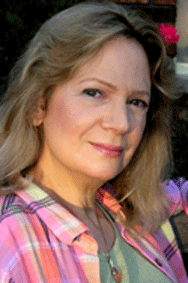After all the ghost, gremlins and goblins have come to my door trick-or-treating, I like to snuggle down with the leftover candy and a spooktacular book on Halloween night. There’s no shortage of wickedly good books to choose from. When my children were young, they enjoyed hearing me read Linda Williams’ The Little Old Lady Who Was Not Afraid of Anything. It wasn’t long before we graduated to Washington Irving’s classic, The Legend of Sleepy Hollow. On my own time, I gravitate to such haunting books as The Exorcist, Rosemary’s Baby, The Haunting of Hill House, the early novels of Stephen King and anything by Edgar Allan Poe.
What is it that attracts us to horror stories designed to capture our imagination in the creepiest, most terrifying ways? Danish researcher Mathias Clasen claims it’s in our DNA to want our fill of thrill. “When our ancestors lived as hunter-gatherers in the East African savannah, it was important that they were prepared for possible attacks by predators and vermin,” says Clasen, who presented his PhD thesis on horror at the Department of Aesthetics and Communication – English, Aarhus University (Denmark).
Dracula may have been inspired by the real Vlad The Impaler, a cruel Romanian Prince who lived in the 1400s. But, according to Clasen, our fear of creatures with fangs began when some of our ancestors were possible blue plate specials for lions and other sharp-toothed creatures of prey. In order to survive, our early predecessors “had to train their reactions to stressful situations, and the desire to do so became stored in their DNA – which we still carry today.”
Likewise, the ancient real fear of the danger of eating rotten meat may be at the core of our horrified disgust with zombies. When watching a horror movie or reading a horror book, says Clasen, “We’re training our danger preparedness.”
In horror stories, characters and plots may also address topical concerns. Bram Stoker’s Dracula, published in 1897, reflects Victorian views of women, sex and colonialism. William Peter Blatty’s 1973 shocker, The Exorcist, plays on contemporary themes of questioning established religion and the generation gap felt between parents and their children. “We use fiction as an ‘emotional simulator’ to broaden our horizons,” says Clasen. “Horror fiction exercises our reactions to what’s terrible and frightening.”
Perhaps the biggest attraction to horror fiction is the reader’s awareness that the nightmare can be ended with the simple closing of a book. Of course, that does not guarantee that the fear will leave you. As you shake and shiver your way through a nightmarish book this Halloween, know that the tingling in your spine is more than your imagination. It’s the DNA message from beyond the grave!

